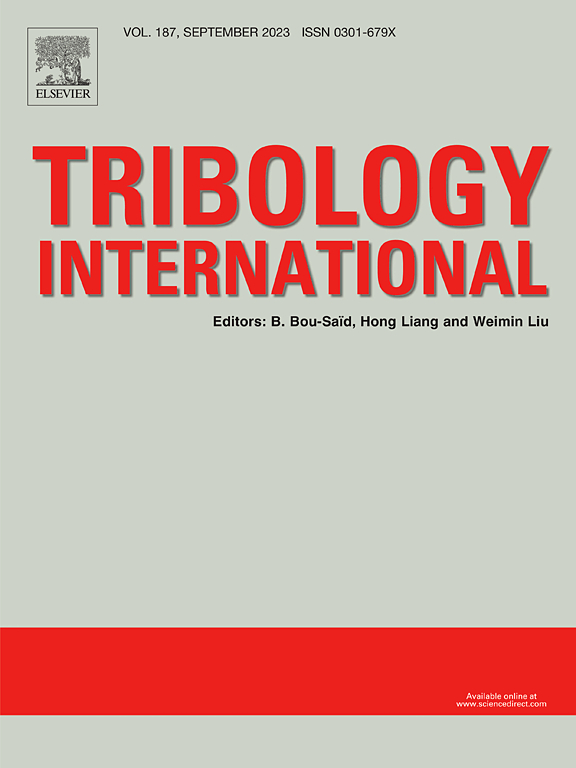Effect of electrode/polymer interface properties on electromechanical responses of polymer sensing units
IF 6.1
1区 工程技术
Q1 ENGINEERING, MECHANICAL
引用次数: 0
Abstract
The difference of mechanical properties between metal electrode and polymer leads to deformation, damage and friction of electrode/polymer interface, which affect the electromechanical responses of polymer sensing units. In this paper, the normal, tangential loading and friction induced electromechanical responses of Cu/ polydimethylsiloxane (PDMS) interfaces under different geometrical parameters and loading velocities (V) have been studied experimentally and numerically. The polarization model considering flexoelectric effect, interface damage and friction effect is proposed. The results show that tangential loading and voltage U increase with increasing of interface area and V; the first extreme value of U (-200∼+200 mV) are mainly related to flexoelectric effect (strain gradient), the second extreme values of U (60–1100 mV) are affected by interface damage. The normal loading induced U are generated by interface damage. The friction induced U (-200∼-2700 mV) is related to relative friction distance and effective contact area. Theoretical analysis shows that, the flexoelectric coefficients are 10−11∼10−10 C·m−1, the interface damage induced voltage is 4424.63 ± 433.12 V·m−2, the friction induced voltage is 17.54 + 391.43 Lc (V·m−1) (Lc is the compression distance). The research can contribute to the development of electrode/polymer sensing unit.
求助全文
约1分钟内获得全文
求助全文
来源期刊

Tribology International
工程技术-工程:机械
CiteScore
10.10
自引率
16.10%
发文量
627
审稿时长
35 days
期刊介绍:
Tribology is the science of rubbing surfaces and contributes to every facet of our everyday life, from live cell friction to engine lubrication and seismology. As such tribology is truly multidisciplinary and this extraordinary breadth of scientific interest is reflected in the scope of Tribology International.
Tribology International seeks to publish original research papers of the highest scientific quality to provide an archival resource for scientists from all backgrounds. Written contributions are invited reporting experimental and modelling studies both in established areas of tribology and emerging fields. Scientific topics include the physics or chemistry of tribo-surfaces, bio-tribology, surface engineering and materials, contact mechanics, nano-tribology, lubricants and hydrodynamic lubrication.
 求助内容:
求助内容: 应助结果提醒方式:
应助结果提醒方式:


